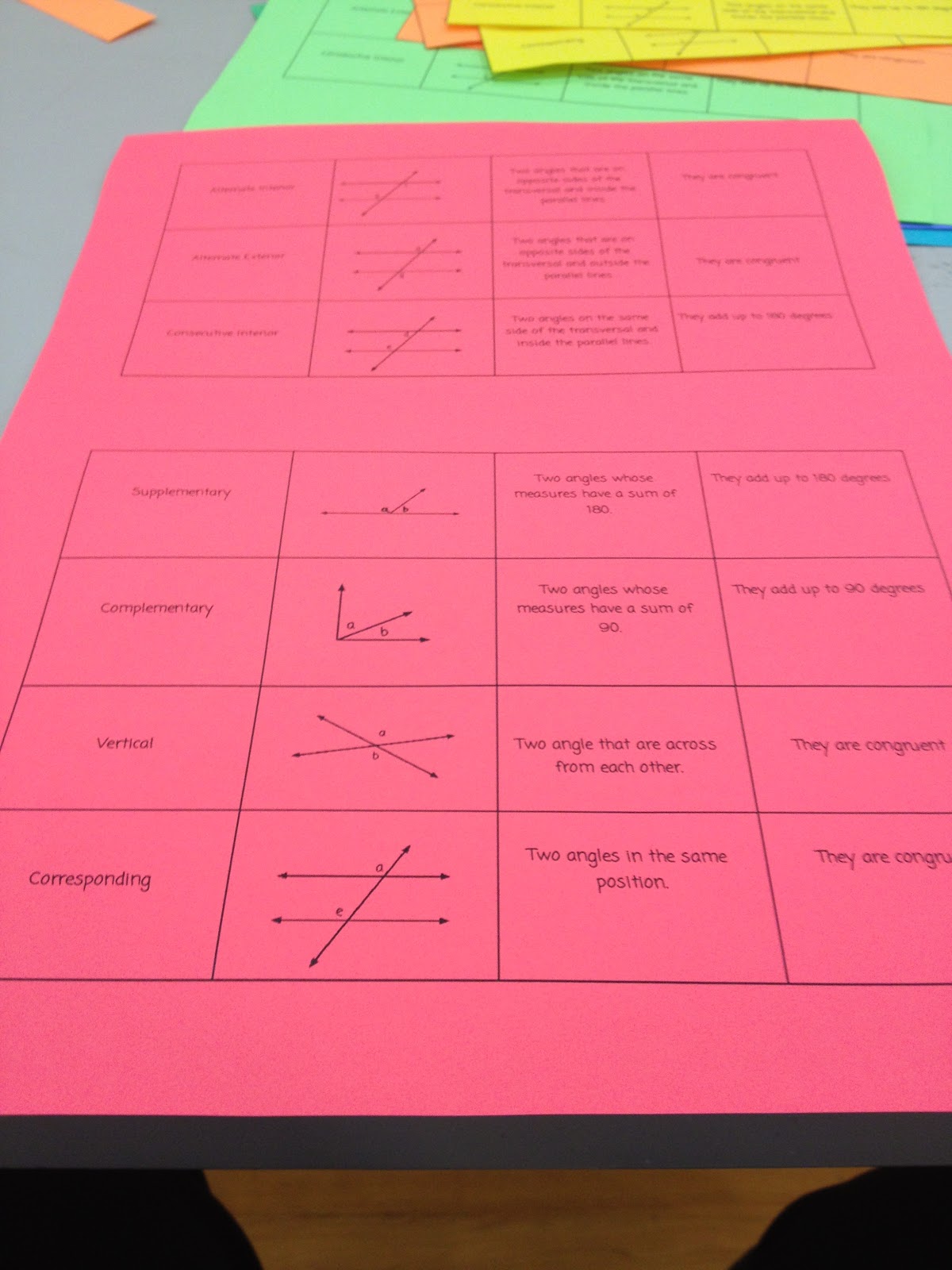 One of my favorite things to have the students do to help them memorize information is to create a sorting activity. I will have them do the sorting activity a few times through out the unit to help them remember the information.
One of my favorite things to have the students do to help them memorize information is to create a sorting activity. I will have them do the sorting activity a few times through out the unit to help them remember the information.I start off by creating a document with a table. In this case I created an activity to help my students learn the different angle pairs in Geometry. One box is the name, another is a picture/example, next is the definition, and the final box is the relationship.
 Once I am finished typing it up, I copy it on different colored sheets of paper, cut them up and paper clip them together. Sometimes I have them laminated so that they can be used over and over again.
Once I am finished typing it up, I copy it on different colored sheets of paper, cut them up and paper clip them together. Sometimes I have them laminated so that they can be used over and over again. The colored paper in my book is a MUST! Often my students will drop a piece on the floor and when they are colored it's easier to know which clip they belong in. I use to do them on white paper but would spend a lot of time trying to figure out which clip the dropped piece would belong in.
I have created problem sorts as well where one card had a math problem and the other one had the answer. These were usually like 10 problems long. It allows students to get immediate feedback to see if they are doing it correctly. They know it was done correctly if they can find their answer, otherwise they know to go back and work it out again.
Another sort I have made was on the scientific method. One half of the table was the steps and the other side was a part of a lab write up that I broke down into parts. The students had to read the part of the lab and determine which step that was.
Sorts can be used for so many different topics...Parts of a story, Historical Events with their causes and effects, cooking equipment with their names, lab equipment with their names, etc.
If you use sorts please share your ideas!













